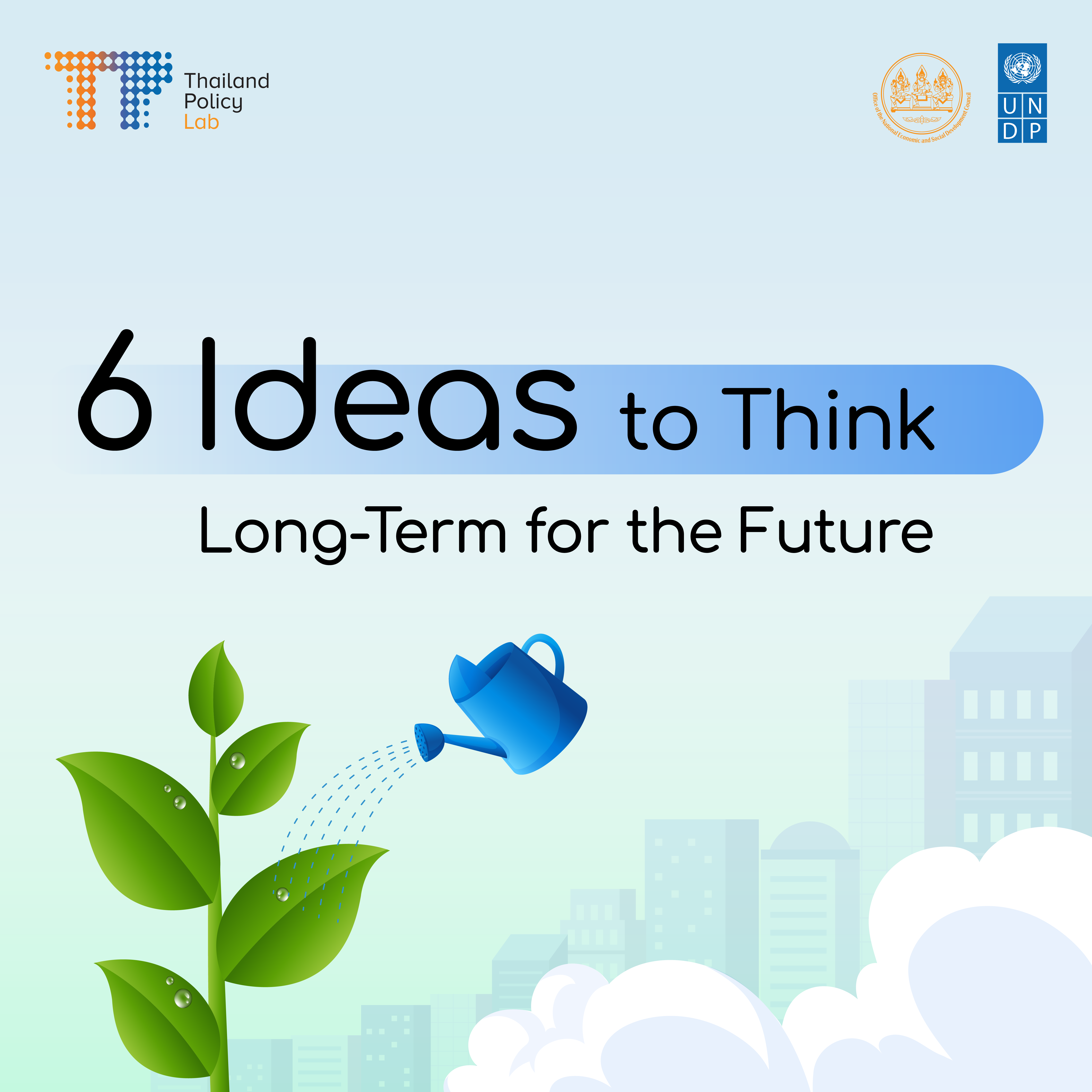In the past fifty years, we have been faced with a myriad of uncertainties: the COVID-19 pandemic that has upended the world, temperatures rising to more than 40°C affecting health and mortality from heat waves. While experts have been warning us about climate change and deadly pandemics, by focusing on what is happening in front of us, we may lose sight of the future and how to handle changes.
Roman Krznaric, an Australian philosopher, says that we now live in the tug war between “short-termism” and “long-term thinking.” Everything surrounding us distracts us to only immerse in the here and now – the ticking clock of modern life, technology and the internet that diverts our attention, capitalism which always speculates profits and creates financial crises, economic fluctuations of the world, the ever-increasing growth, and politics that only focuses on the four-year parliamentary term. Policymakers have criticised such a political system for merely fixating on policies that ensure popular support and only solve problems during their incumbency.
Such short-term thinking does not affect us today, but it is going to in the future – it will affect the lives of those not yet born. Environmental deterioration, decrease in natural resources, droughts, or PM2.5 are all the repercussions of past policy decisions. We need to ask ourselves how we can change and create a better future for the younger generations.
“Long-term thinking” is a way of thinking that takes into account future ramifications that will follow based on present decisions. Policymakers can apply long-term thinking to their policy evaluation and framework to see what effect a policy will create in the future.
Where do we start to think more about the future? Krznaric proposes the following six ideas based on the notion that we should be good predecessors for those who come after:
-
- Deep-Time Humility – Accept the fact that we are a speck of dust in cosmic time. But our here-and-now decisions can still affect millions of lives that will live on this planet after we no longer exist.
- Legacy Mindset – Set out to be remembered well by those who come after. Be a predecessor that creates a better future for all posterity, even though they are not related to you by blood.
- Intergenerational Justice – Think about the seven generations ahead. Your action today defines billions of lives in the future. Passing on justice depends on the people of our generation.
- Cathedral Thinking – Plan for a long-term future like those in the Middle Ages who built a cathedral that could not possibly be finished in their lifetime. But the cathedral they helped build with a well-thought structure lives on for more than 500 years.
- Holistic Forecasting – Prepare multiple options for the future since you cannot rely on merely a single alternative. This will help you adapt when the unexpected occasion arises – transform crises into changes and break from the traditional system.
- Transcendent Goal – Remember that we do not have another planet Earth in stock in case this one is ruined. Preserve the world for the billions of lives in the future.
The next step is: how do we apply the above thinking to governmental practices or policy frameworks?
- Welcome the younger generations into governmental mechanisms: In Wales, the government set up a youth committee to open a space for the youths to draft the Well-being and Future Generations Act. In Hungary and Israel, the governments also set up youth committees and granted them the power to veto draft laws in the parliament.
- Create public policy based on long-term thinking: The New Zealand government set up a national policy framework by integrating “impacts on youth” as part of the indicators. This resulted in “The Wellbeing Budget 2019” where the government does not simply use GDP as a single indicator in budget allocation but also focuses on other dimensions of life such as children’s development, deterrence of domestic violence, and mental wellbeing, especially of those younger than 24 years old.
- Use the future tools in policymaking: Strategic foresight can be employed to create policies and long-term thinking can be used to assess the future impact of a policy.
We are now experiencing such a high degree of uncertainty that we do not wish the same for future generations. “Long-term thinking” is an alternative that we can leave behind – we can create a better future for those yet to be born, a better world and better immunity against uncertainty. As often heard, “A society grows great when old men plant trees in whose shade they shall never sit.”
References:
- https://medium.com/the-long-now-foundation/six-ways-to-think-long-term-da373b3377a4
- https://sdg.iisd.org/commentary/guest-articles/future-perfect-integrating-long-term-thinking-into-public-policy/
- https://www.zurich.com/en/media/magazine/2023/why-are-we-so-bad-at-long-term-thinking
- https://www.undp.org/sites/g/files/zskgke326/files/2022-09/UNDP-RBAP-POLYCRISIS-AND-LONG-TERM-THINKING-2022.pdf
- https://www.treasury.govt.nz/publications/wellbeing-budget/wellbeing-budget-2019

